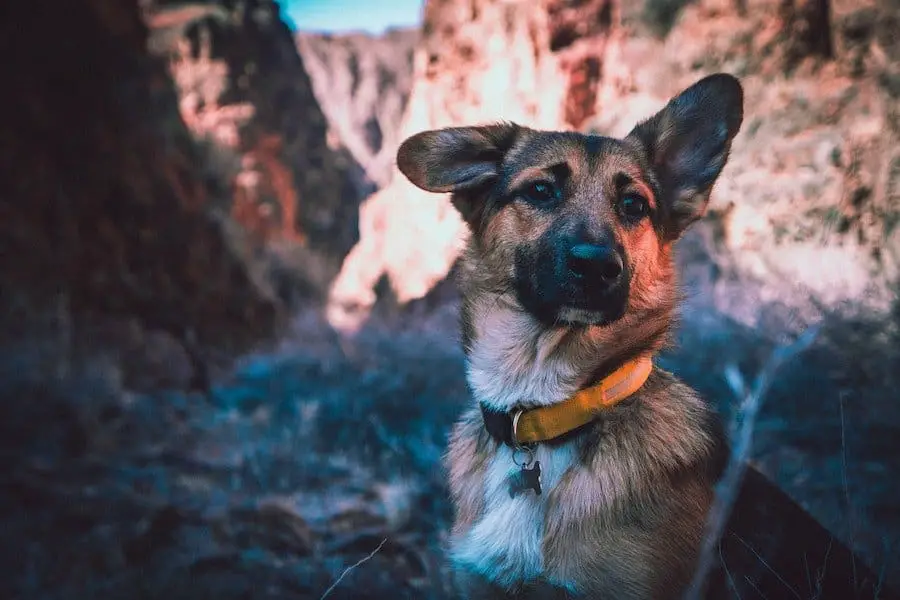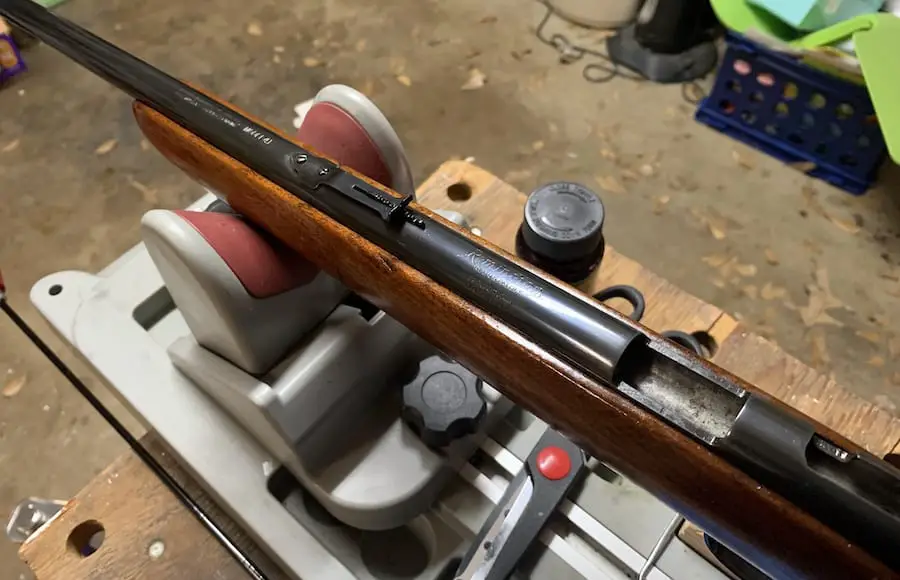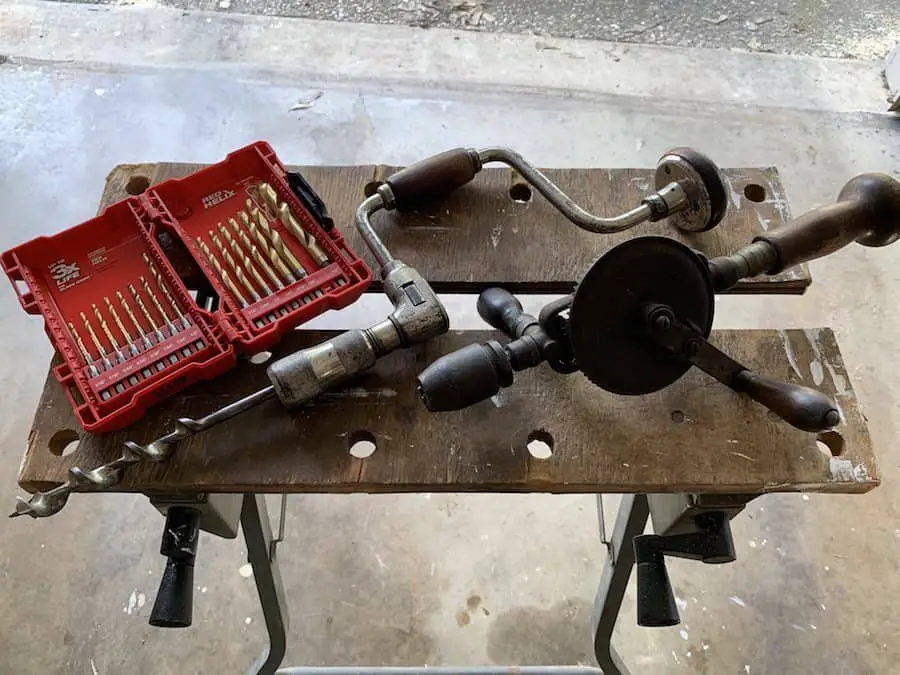14 Concealed Carry Tips
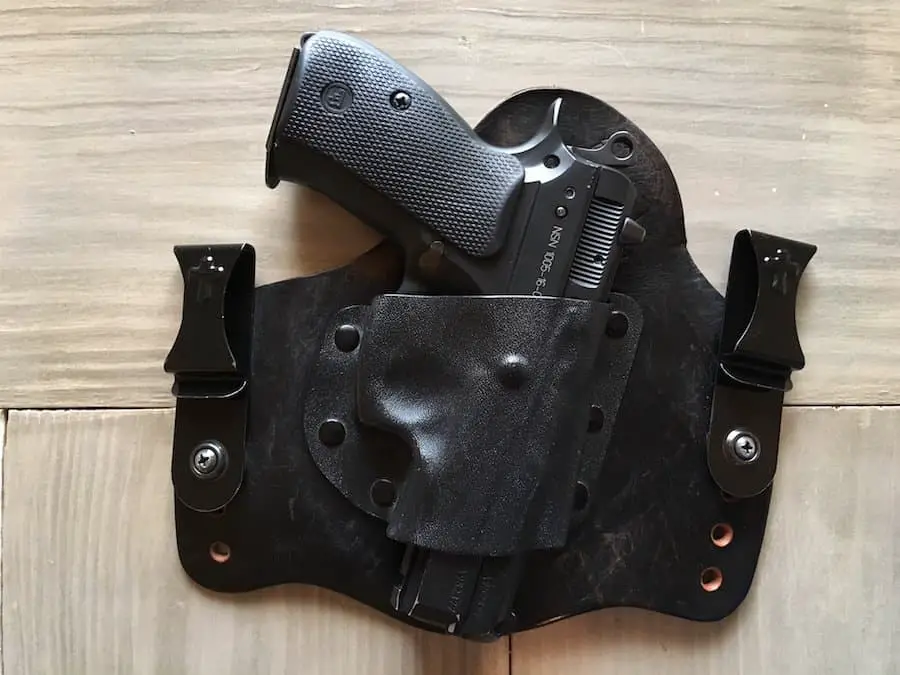
One of the most important rights we enjoy as Americans is the right to keep and bear arms. Over the past few decades, numerous states have affirmed this right by passing legislation to recognize a citizen’s right to carry a weapon in public. Below are 14 Concealed Carry Tips I have learned from the past decade of carrying a firearm. While these tips are specifically for concealed carry, many of them are applicable to open carry as well.
Actually Carry Your Gun
Many people have a handgun carry permit or live in a state with Constitutional Carry. However, only a small number of those people actually carry their firearm on a regular basis. I’m not including people that don’t own guns. The people I’m talking about have guns, shoot them, and (occasionally) carry a firearm.
If you own a firearm, can handle and shoot it safely, and can carry it legally, you should carry as much as possible. You have already invested your money and time into being able to carry a firearm. Take advantage of it! Imagine how you would feel if you left your gun at home and that was the day that some thug decided your family would make great victims. You may live with feelings of guilt for the rest of your life.
A gun left in a safe or glovebox is useless. Most violent encounters begin within a few feet of a victim and are over in a matter of seconds. The best way to be ready for a situation like this is to have your gun with you at all times.
Carry a Quality Firearm
If you are going to carry a firearm, you need to make sure it is a good one. Having a firearm that won’t run, in my opinion, is worse than not carrying one at all. Unreliable firearms instill a false sense of confidence. Also, if you ever have to draw a firearm, you and your gun better be ready to get the job done. If your firearm jams after the first shot or doesn’t fire at all, don’t count on the bad guy to show you mercy.
Some people may not like me saying this, but expect to pay at least $350 for a decent handgun. Most guns that cost less are cheap for a reason.
I know someone who bought a cheap “gun store special” from an overeager sales clerk. That firearm has never worked properly. To make matters worse, now they can’t even sell it to get their money back. That gun has been a total loss for them.
If you can’t afford a good gun now, have a garage sale to build up some funds. Cheap guns are a waste of money and cost more in the long run.
Don’t Carry the Noisy Cricket (Unless You Can Shoot It)
One of my favorite parts of the movie Men in Black was when Tommy Lee Jones gave Will Smith the tiny space gun called “The Noisy Cricket”. When Smith shot it, the gun was completely uncontrollable. In the hands of inexperienced shooters, tiny subcompact handguns behave in a similar way. Thankfully, they don’t throw their users through the air though. Although that would be absolute gold on Youtube…
Smaller firearms handle much differently than larger guns. They are difficult to shoot accurately, especially for new shooters or those that don’t practice often. By their nature, they have a short sight radius and limited gripping area. Small pistols can be shot effectively but only by very proficient shooters.
Another reason why I avoid super small handguns is that they are no match for the types of threats that lurk in today’s world. Ever since antisocial psychopaths figured out that they could get a few minutes of fame by killing a bunch of people, mass killings have become more and more common. I’m not going to start a debate as to why this is such a problem, but the prevalence of these types of situations is something you should consider when choosing a concealed carry firearm.
I personally like “compact” handguns, such as the Glock 19 and other similarly-sized weapons. They are small enough to conceal but can hold a bunch of rounds. Compared to subcompacts, they are fairly easy to shoot accurately. No handgun is an ideal choice to take on a crazy guy with a rifle. But if I had to do so, I would rather have a gun that I can shoot accurately that gives me plenty of chances to land a hit.
My personal choice for a carry handgun is the CZ P-01. It is accurate, reliable, and one of the most ergonomic guns I have ever shot. Click here to read my full review of the CZ P-01.
Be Able to Shoot Your Carry Gun Well
Another important thing to think about when carrying a handgun is your ability level with the particular gun you will be carrying. Many people like to practice with their range toy, but then carry a different gun that they rarely practice with.
This can result in a dangerous situation for anyone that happens to be in the zip code if that person has to use their weapon. You owe it to yourself and those around you to be able to shoot your firearm accurately. Failure to do so may make you an even greater danger to yourself and others than the bad guy was.
If you can’t shoot your carry gun accurately, then get help from an experienced shooter and practice. If it is so uncomfortable to shoot that you can’t bring yourself to go to the range, then get a different gun.
Know How to Handle Your Firearm
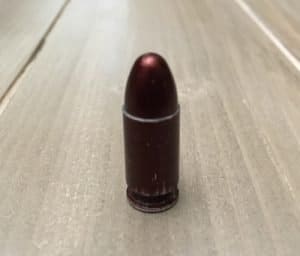
Being able to shoot accurately is only part of what you should be able to do with your handgun. You should also be competent while handling it. This includes loading, unloading, holstering, drawing, clearing malfunctions, and a host of other things.
There are few things that I find more terrifying than the person at the range who clearly has no idea how to handle their firearm. I immediately evacuate to a different area or just go home when someone shows up, opens their gun case, and looks at their gun with the same confused expression I have on my face when I try to figure out why a car won’t start.
You should know the purpose of every lever and button on your firearm. Also, get some snap caps, like those offered by A-Zoom. They are machined aluminum dummy rounds with a rubber primer. Snap caps are great tools to use to help you practice loading, unloading, and clearing malfunctions from your gun. You can also use them for dry fire practice to help you improve your trigger pull.
Practice Your Draw
One of the most important firearm handling skills when carrying a concealed weapon is being able to draw your weapon. Your draw should be safe, fast, and result in an accurate hit on target. Drawing from concealment will consist of the following steps:
- Defeat the garment (move your shirt or jacket out of the way)
- Grip the firearm
- Pull the firearm from the holster
- Present the firearm (point it at the target)
- Fire
I use two different methods when practicing my draw from concealment. The first method uses my carry gun and snap caps. The second method involves an airsoft replica of my carry gun.
Snap Cap Method
When using snap caps, I remove all live ammunition from the area and load snap caps into my firearm. I will set up a target and draw the weapon from concealment. When I’m on target, I pull the trigger. This helps me develop muscle memory for my firearm’s trigger pull.
When using snap caps, you still have a real gun in your hands. Be sure not to point the gun at anything you don’t want to destroy, such as people, your dog, or the tv. Do it away from other people. Be a little OCD when making sure you actually have snap caps loaded and not real ammo. Check two or three times.
Airsoft Method
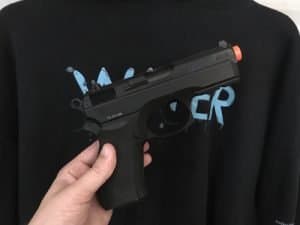
Although airsoft guns have a bad reputation with some in the gun community, they can be valuable training tools if used properly. Most common concealed carry firearms have airsoft clones, which are almost identical in size and shape to the originals. I was able to find an airsoft version of my CZ P-01 for around $20. The grip profile and size are very similar, although it is significantly lighter than the real thing.
Practicing with airsoft guns allows you to practice drawing and shooting in your home or backyard. Just make sure that you don’t get the airsoft gun and your real gun mixed up. When practicing with your airsoft gun, put the real deal in your safe or in a separate room.
I like to hang a paper target or hoodie and use it as a target. I can practice my draw and even shooting while moving. Although it isn’t exactly the same as shooting my actual carry gun, it is a useful way to practice when I can’t get to the range. A garage is a good place to do this sort of practice. It is away from other people and pets, so I don’t have to worry about a BB hitting anyone. Always wear eye protection though. Airsoft BB’s have a tendency to bounce all over the place.
Using an airsoft gun is a less expensive and safer way to incorporate new elements into your shooting. When practicing something new, I’d rather make a mistake with an airsoft gun than a real firearm.
Don’t Fiddle With Your Gun
Once you set your gun in the holster, leave it alone. It doesn’t matter how well you have your gun concealed, every time you touch it, your body language communicates to everyone around you that there is something important going on there.
If you are worried about your gun falling out, don’t. Unless you have to sprint across a parking lot and perform Captain Kirk-style army roll maneuvers, it is highly unlikely that your gun is simply going to fall out of the holster. This is especially true if you have invested in a good quality holster. More on that below…
Another reason that people mess with their gun while it is concealed is that they want to make sure it remains concealed. Take solace in the fact that most people have almost zero situational awareness. They are too busy texting or rushing through Wal-Mart to notice that tiny bulge under your shirt. It just isn’t something that is on most people’s radar. If you think that you need to check on your gun, calmly walk to the restroom and do so in a bathroom stall.
Carry Your Gun In a Quality Holster
A quality holster is one of the most important firearm accessories you need if you are going to carry concealed. When I first started carrying a handgun, I used a neoprene “one size fits most” holster. It was uncomfortable, started falling apart, and wasn’t easy to put a gun into.
It was difficult to insert the gun into the holster because it would not stay open on its own. The only form that “floppy” holsters have is from their stitching and the gun inside. When they are placed inside your waistband, they collapse. This is more than an inconvenience; it can be downright dangerous.
As you are struggling to insert a firearm in a cheap holster such as this, it is very easy to accidentally pull the trigger. The trigger could get caught on your pants or the holster itself. Depending on where you are carrying your firearm, this could result in severe injury or death.
Any holster that you use for concealed carry should be specifically designed for your handgun. This will ensure that your gun fits into it safely and stays put. The best holsters are made of molded Kydex, leather, or a combination of the two. Holsters such as this are available from several manufacturers in a wide range of styles.
My everyday carry holster is a Crossbreed Super Tuck. It does a good job distributing the weight of the firearm over a large area, making it more comfortable to wear for extended periods of time. It is also nice to have the option of tucking a shirt in over the gun and holster.
Use A Good Belt
When carrying a concealed firearm, you want to make sure that you use a good belt. The main reason for this is that guns are heavy. Even if you carry a subcompact handgun, it is probably the heaviest thing in your pockets or on your belt. Using a cheap belt will be uncomfortable. It may also break under the weight of the gun. How awkward would it be to get pantsed by your own gun?
Several holster manufacturers produce really nice gun belts. They feature thick leather, heavy-duty buckles, and rivet-reinforced stitching. Belts such as these are like a hybrid between a tool belt and a normal one used for everyday wear with clothing.
Sturdy gun belts such as this will support more of the weight of the gun so that your hips don’t have to. A thin and flimsy belt will twist under the weight of a firearm. This twisting will result in pinching and hot spots on your hip.
Gun belts are available to suit both casual wear and dress clothing. They are rather expensive, so if I could only get one, I would choose one made of black leather with a silver-colored or brushed steel buckle. A belt such as this would be suitable for formal occasions and everyday wear with jeans.
Pick Your Wardrobe Carefully
Carrying a concealed firearm will have a big influence on the types of clothing that you wear and how you buy clothes. For example, when buying new pants, I have to try them on with my holster and gun to make sure I can carry while I am wearing them. This is a good practice whether you are buying jeans, dress pants, or shorts.
You want your clothes to be comfortable, blend in, and help you conceal your firearm. As long as you don’t like to wear skinny jeans and tight t-shirts, it isn’t too hard. I wear jeans, khaki’s, polo shirts, and untucked button-up shirts most of the places that I go to. Having to wear dress clothes complicates things a little, but sport coats make it much easier to conceal a firearm.
I have found that stretch-waist dress pants are very helpful if I need to look nice while carrying concealed. These aren’t the stretchy-waist sweatpants that your grandpa wears at the nursing home. They are dress pants with a hidden stretching waist. When wearing a belt, it is very difficult to tell the difference between them and regular dress pants.
My dress pant of choice is the Haggar Cool 18. It comes in several colors and is very comfortable. The stretch waist allows it to fit well whether I am carrying a gun or not.
If you are a lady who is concealed carrying, your concerns will be a little different than mine. Cardigans, kimonos, and vests may allow some women to carry a slightly larger firearm, like the above-mentioned Glock 19.
Carry Your Gun on Your Body
When carrying a firearm, always carry it in a holster on your body. This will help ensure that the gun is always under your control and is easy to get to. Carrying a firearm off-body in a purse or backpack presents many problems.
The main problem with off-body carry is that it is too easy for someone else to gain access to your firearm. In 2014, a child pulled their mother’s firearm from her purse and accidentally shot her. Tragically, the mother died. It only takes a couple of seconds for something like this to happen.
Another issue with off-body carry is that firearms carried in this manner are less accessible. Firearms stored in purses or backpacks, due to their weight, tend to migrate to the bottom of the bag. Other items end up on top of the gun, becoming obstacles when attempting to draw it. I have even heard of guns being shoved in a purse and ending up with dried up candy and gum stuck to it.
If You Have to Carry Off-Body…
Although I strongly discourage off-body carry, there are situations where it may be your only solution. For example, when hiking, I keep my firearm in a holster secured to a velcro panel inside of my backpack. The backpack itself is specifically designed for concealed carry. I don’t carry my gun this way very often. However, when hiking, it is definitely preferable to having a gun being trapped between a heavy backpack and my kidneys.
If you must carry off-body, be sure to use a backpack or purse that is designed for concealed carry. This will make off-body carry much safer. It will also make your firearm more accessible in case you need it.
In my case, I use a 5.11 Covrt 18 Backpack with a Maxpedition Universal CCW Holster. This setup allows me to carry a firearm securely and be able to access it fast if necessary.
If you have to do off-body carry, be sure to maintain control of your backpack or purse at all times. Don’t set it down or leave it unattended. You could be held responsible if someone finds the gun and uses it or for simply leaving it unattended.
Keep Your Gun Clean
One of the most important concealed carry tips I can give anyone is to keep their gun clean. Guns don’t operate reliably if they have dust bunnies the size of real bunnies growing inside of them. Be aware of the fuzz and other crud sticking to the outside of your firearm and clean it off. It is also a good idea to field strip your carry gun at least once a month to make sure it is properly lubricated and clear of any junk that could cause it to malfunction.
If you carry a semi-automatic firearm, make sure that the bore, slide rails, and magazine are clear of debris. For hammer-fired handguns, make sure that the area where the hammer hits the firing pin is clean. If using a revolver, the bore and cylinder are the main spots to keep an eye on.
Make sure that your firearm is completely unloaded before you inspect it or clean it. There have been many accidents caused by “unloaded” guns.
Know Local and Federal Laws
Carrying a firearm will be counter-productive if you get arrested while doing so. While in jail, you would be deprived of all of your basic freedoms. Also, once you get out of jail, it is very likely that you will be prohibited from even owning a firearm in the future.
Because of this, it is very important for you to know the laws in your area that govern concealed carry and other aspects of firearm ownership. Some of the most important laws involve prohibited areas and your duty to inform police officers.
Prohibited places include schools, hospitals, government buildings, and numerous other locations. Penalties for entering locations such as these vary by location and the type of facility. Entering some locations, such as post offices, with a firearm is a federal offense. However, states and even some cities have their own rules about where you can and cannot carry a firearm.
Many states require you to inform a police officer that you are carrying a concealed weapon. These mainly apply if you are pulled over for a traffic stop. However, they can also apply for other situations when a police officer is interacting with you in an official capacity. Rules and penalties for these laws vary widely as well.
At the end of the day, it is your responsibility to know the firearm laws for your area and keep them in mind as you are concealed carrying. I have found that the best way to educate myself on firearms is to look at the statutes themselves. State and local websites are good places to research any laws that may affect you.
Know Firearm Laws While Traveling
 Just like you should know firearm laws where you live, you also need to know them for areas you travel to. When I am on vacation, I still try to carry my firearm everywhere I possibly can. I take this so seriously that I actively try to avoid cities, states, and activities that would prevent me from doing so.
Just like you should know firearm laws where you live, you also need to know them for areas you travel to. When I am on vacation, I still try to carry my firearm everywhere I possibly can. I take this so seriously that I actively try to avoid cities, states, and activities that would prevent me from doing so.
Before I travel, I always check the firearm laws for the states I will be traveling through and my final destination. One of my favorite ways to do this is the CCW app. It is a helpful tool to see which states your carry permit is valid in. The CCW app also provides a basic overview of each state’s most important firearm carry and transport laws. Even though I use this app, I double check a state’s firearm statutes before I travel.
Below are links to the CCW app:
CCW App in the Google Play Store
Conclusion
Carrying a firearm can be a challenge, especially if you haven’t been doing it long. However, with practice, it can be an invaluable part of your preparedness and personal defense strategy. If you have experience carrying a concealed firearm and would like to share I tip that I didn’t mention, please feel free to add it in the comments below.





